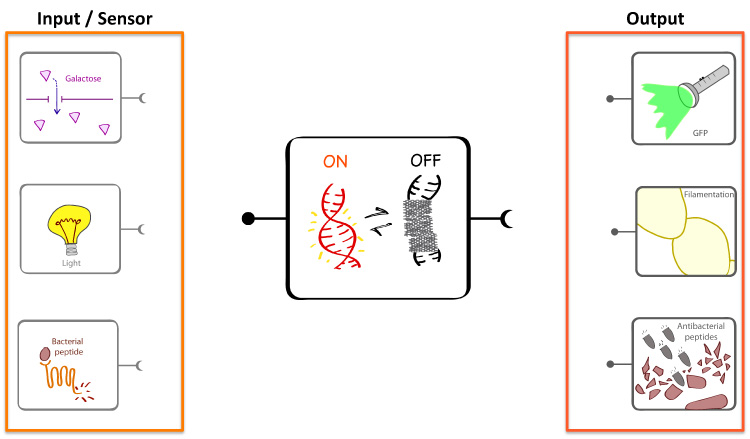Team:UCSF/Higher order systems
From 2008.igem.org
The chromatin bit can be useful for a variety of applications. In our experiments we used a galactose input to silence the expression of GFP (our output). Still many other inputs can be connected to our synthetic chromatin bit and many different outputs could be obtained. The modularity and characteristics of the chromatin bit should allow a short-term input to induce a long-term change, like differentiation. Cellular Memory would be encoded in the form of Chromatin remodeling. We are looking forward to the many possibilities that can be created with our synthetic chromatin system.
In the following image we can see some of the inputs and outputs we started connecting to the chromatin bit.
Other inputs besides galactose: (1) light-induced dimerization of LexADBD and Sir2 (light sensor) and (2) Human GPCR that is activated by bacterial peptides (bacterial sensor).
Other outputs besides silencing of GFP expression: (1) production and secretion of antibacterial peptides and (2) yeast induced filamentation.
The combinations we thought of creating were a Light-induced Yeast Filamentation and Yeast Immmune System. We are looking forward to tell you more about it at iGEM in November!
| Home | The Team | The Project | Parts Submitted to the Registry | Modeling | Human Practices | Notebooks |
|---|
 "
"
